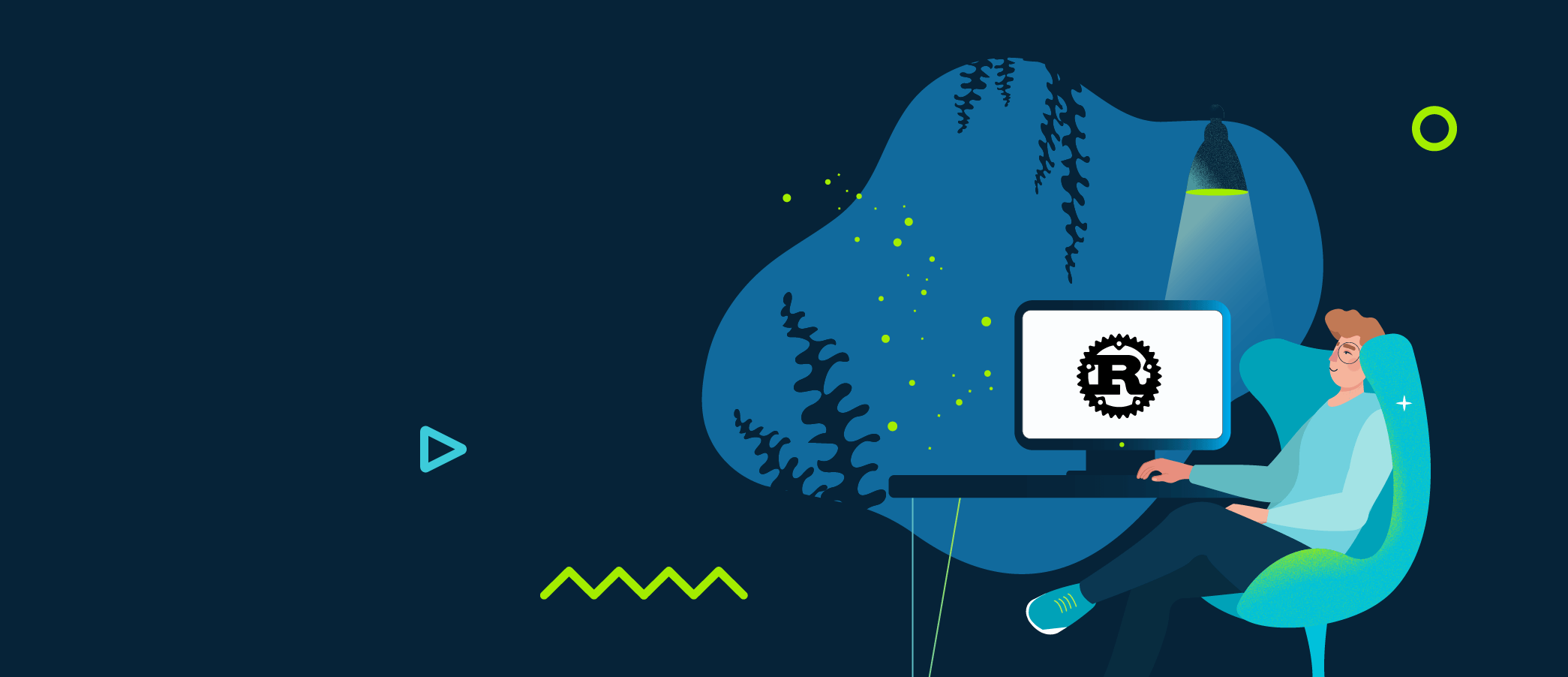According to the Stack Overflow Developer Survey, Python takes third place in the most popular technology rankings. What features have put Python in the top three? Does this programming language really deserve its fame?
This article will focus on the reason for Python's popularity, its features, and possible usages. Moreover, there are also some examples of big IT companies that use Python in production.
What is Python?
Python is one of the most popular programming languages, and there are a lot of resources dedicated to this technology. Let's look at Python's features, history, and possible implementations to shed more light on details that can determine this language's success.
History of the Python programming language
Python’s story started in the late 1980s, but its implementation began at the end of 1989. The project had one principal author and leader who set the direction of development – Guido van Rossum (he gave up his leadership role in 2018).
Version 1.0 saw daylight in January 1994, and included features like lambda, reduce, map, and filter. Python 2.0 replaced the first version of this programming language in 2000 and provided users with new features, including garbage collector.
"Python 3000" or "Py3K" (officially Python 3.0) was released in the last month of 2008 – it changes print into a built-in function instead of keeping it as a statement and removes backward-compatibility features, including old-style classes, string exceptions, and implicit relative imports.

Python features
In short, Python is a high-level, interpreted, procedural, object-oriented language with dynamic semantics. What does that mean in detail?
The Python language allows for writing (more or less) independent programs for any type of computer and provides strong abstraction from the details (high-level). It has to be converted by an interpreter into machine code (interpreted). Python’s source code is compiled into bytecode that the virtual machine can execute. The language provides support for programming using a classes and objects paradigm (object-oriented). Dynamic semantics means that Python uses variables as dynamic objects. Variables store references to underlying values or objects.
Python combines dynamic typing and dynamic binding. The variables are determined only during runtime. Instead of being specified by a declaration statement, they are bound to a type. Last but not least, Python is a general-purpose language, so it is not specialized for any specific issues and has a lot of built-in data structures. This is one of the most important reasons for Python's popularity.
Multithreading in Python – Python’s GIL
GIL, or Global Interpreter Lock, is a mutex. It works as a gatekeeper – at a specific point in time, only one thread can be in a state of execution and it is permitted to maintain control of the Python interpreter (basically GIL prevents the use of multiple CPU cores simultaneously and ensures only one thread can execute Python code at any one time).
As such, GIL only applies to multithreading and prevents real parallelism in that aspect. However, parallelism in Python is still achievable by using multiprocessing, which helps to speed up CPU-bound, computationally heavy tasks.
The GIL feature is not the most popular one among Python developers – there is a common view that GIL is challenging.
Python implementations
There are plenty of available Python implementations adjusted to specific requirements – both developer and software. This article focuses on the original Python implementation (CPython) – every mentioned characteristic and feature will be according to this implementation.
Let’s take a closer look at the abovementioned other Python language implementations.
IronPython – open source Python implementation integrated with .NET. IronPython could be used as a fast and expressive scripting language by developers for, among other things, embedded or testing.
Jython – implementation complementary to Java for commercial and non-commercial usage helping with embedded scripting and application development.
MicroPython – implementation optimized for microcontrollers and running in constrained environments.
PyPy – this alternative to CPython with a JIT compiler onboard ensures that Python programs run faster.
Stackless Python is a fork of CPython and is dedicated to supporting microthreads.
Advantages of the Python programming language
Python, despite its flexibility, is not first choice for every type of project – when the top priority is a high performance, it will probably not meet the project’s requirements. In this case, better put the Python option away and leave it until the next project.
What pros make Python so popular and overcome the inconveniences connected with this programming language?
- Python is easy to learn. The Python language has simple, similar-to-English syntax, which makes it more developer-friendly. The code is easier to learn and read, and what is also important, fewer code lines are needed to code specific tasks than in C/C++. How else does Python differ from C++? The answer is in our previous article.
- Variety of Python libraries. The standard library in itself covers most developers’ needs, but the Python package manager (pip) facilitates importing other libraries – there is no need to depend on external libraries most of the time.
- Many frameworks and tools. Python provides well-known web frameworks, such as Django and Flask, and tools like Selenium or Pandas that are highly appreciated by many IT professionals.
- Python is a general-purpose language. This is probably the key Python language advantage. The fact that it is general purpose makes it a good choice both for website development, data analysis, game development, and machine learning (ML).
- Active and supportive community. Over the years, Python has gained many developers who have created a community helping both beginners and more experienced programmers. There are also plenty of Python tutorials, guides, and documentation available online.
The Go programming language is chasing Python when it comes to popularity. Are Golang and Python similar? Read our recent comparison to learn more.
What is Python used for?
For Python, flexibility is not a buzzword – this programming language is used across a wide range of businesses.
This short list does not mention all the fields that Python is used in, so please keep in mind that the below points are only examples, and there are many more possible Python usages.
- Automation – instead of performing dull and repetitive tasks over and over again, use Python to save time and automate them. Automation is also helpful when searching for errors and bugs across various files.
- Web development – Python is a popular choice for web development, especially because of its provided frameworks (as mentioned earlier, Django and Flask) and dedicated libraries and modules.
- Artificial intelligence (AI) and machine learning (ML) – Python is commonly used by data scientists for projects connected with AI and ML. Simple Python syntax is not the only reason why it is often taken into consideration. In this case, the programming language also appeals because of its libraries and packages created specifically for AI and ML.
- Data analytics and visualization – Python is relatively easy to learn and flexible so it can be easily integrated into projects, and teams can quickly familiarize themselves with the language.
Check out more about what is Python used for in our article.
At CodiLime, we also take advantage of Python’s great adaptability to different environments. We have used Python to develop:
- a web application for network monitoring in heterogeneous environments,
- CI/CD and testing for a full-stack monitoring and alert service,
- an automatic data center and low-level network infrastructure management solution.
However, this is only a drop in the ocean of Python possible usages. More examples are available in our case studies. Also explore our Python programming services if you want to build a project with us.
Which companies use Python in production?
Python is a popular programming language among both smaller and larger companies – below are a few of the many big names which use the Python language to develop their projects.
Google – Python is one of the few official Google server-side languages. The plan for Google's backend was to use Python whenever possible. Python's main aim was to ensure undemanding maintenance and fast delivery.
Spotify – this music streaming platform uses Python for data analysis and backend. Python was chosen because it accelerates the development process. The coding in Python makes the development pipeline faster.
Reddit – half a year after deployment, the whole site was rewritten into Python from the Lisp language. In this case, the variety of libraries is as important as the readability of the code.
Dropbox – Guido van Rossum has supported Dropbox (yes, the Python creator) as an engineer since 2013. Dropbox has already been recognized in the market, and Guido helped them to grow further and the company in 2019. A significant number of Dropbox libraries and internals are written in Python. Also, Dropbox's API was made with this programming language.
Still unsure if Python is worth your attention? In the next section, you will find the core arguments for giving Python a chance.
Why should you choose Python?
- Python reduces development time.
Python is faster and slower at the same time. How is that possible? To be honest, Python is not the fastest programming language. That is no secret. However, Python compensates for its slower execution time with business speed. A faster development process saves money and shortens time-to-market, making the product easier to upgrade and deploy.
- Python is transparent.
Python’s simple syntax and many connections to the English language are one of the reasons for its popularity, but it is not the only benefit for developers. Even for non-technical team members, Python’s code looks like regular text. This gives them a clear look into the code and the big picture.
- Python is open source.
Python as a free solution provides developers with better access to libraries and modules, helping them in their day-to-day tasks. It is also a great help for smaller companies and startups, where a limited budget is often an impediment.
- Python provides great support for developers.
Developers can rely both on helpful and active community members and on a wide variety of available libraries, guides, and tutorials. Taking all of this together makes a solid background and a mine of information for any possible issue.
- Compatibility of Python.
Python is compatible with many platforms and systems - Windows, Linux, macOS, and more. That means the Python code can be run on any of the mentioned operating systems and, as an interpreted language, is executed directly without the need to be recompiled first – the same code runs equally well on different platforms.
- Python has a great developers’ stack.
Python's popularity is reflected in the solid number of developers who specialize in this programming language. This community is still growing, but indeed, there are experts on the market ready to develop the project and support it with their knowledge.
- Python has a style guide for its code.
PEP 8 is a complete guide for Python’s code that lays out programming good practices. Thanks to PEP 8, developers have access to the code convention and recommendations on how to keep code clear.
Conclusion
Python is the most wanted technology for a fifth year – developers are still working with this programming language, and that is no coincidence.
Python’s power lies in its ability to adapt and adjust, and the wide range of libraries and frameworks available. Strong support from the community facilitates resolution of most possible problems – whatever the issue, there is a good chance that someone has already found a way to overcome it. Taken together, these factors make Python a compelling option on the table when choosing the technology for a project.







